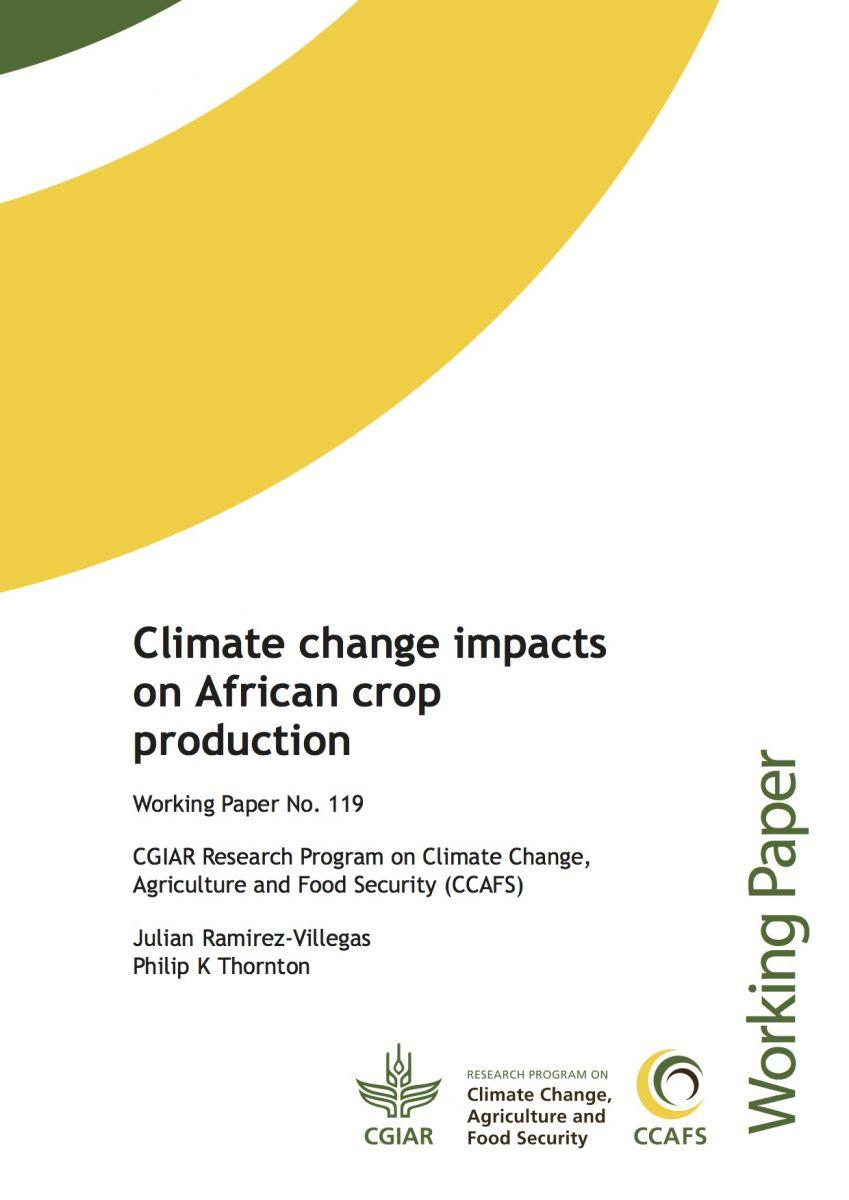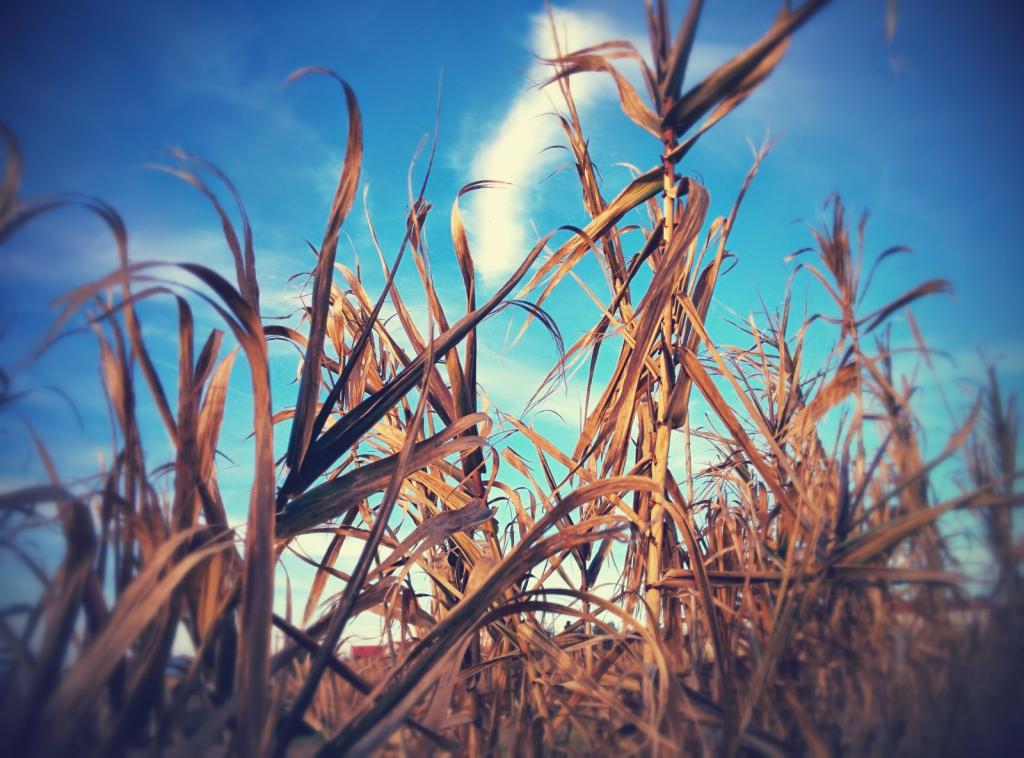Crops under a changing climate: what are the impacts in Africa?

Adaptation measures for especially maize, common beans, Arabica coffee, banana and finger millet are urgently needed in Africa to curb future negative climate impacts.
When analysing the past few years we see a clear trend: over the past 30 years, climate change has reduced food production between 1-5% per decade across the globe. Now, mounting evidence points in a similar direction for future food production.
Even at relatively low levels of warming, i.e. keeping within the 2-degree target, agricultural productivity will most likely decline in the absence of adaptation. Tropical cereal crops such as maize and rice, usually grown in already vulnerable regions in South and Central America, Sub-Saharan Africa and Asia, will in particular be negatively affected.
In order to prepare for the globe’s glaring climatic changes, and ensure policies and programs address food security needs, policy-makers have to receive context-specific climate data and information that they can use. Here, spelling out the various climate-related impacts on crops, and some of the available adaptation measures, is a first step to generate more climate-resilient food systems.
A newly released Working Paper by the CGIAR Research Program on Climate Change,  Agriculture and Food Security (CCAFS) provides an overview of projected climate change impacts on crop production and suitability with a particular focus on Africa. Authors have used a combination of literature review, models and new data analysis.
Agriculture and Food Security (CCAFS) provides an overview of projected climate change impacts on crop production and suitability with a particular focus on Africa. Authors have used a combination of literature review, models and new data analysis.
The paper ‘Climate change impacts on African crop production’ (PDF) analyses 9 staple crops grown on the continent: maize, common bean, cassava, sorghum, yam, finger millet, pearl millet, groundnut, and banana, as well as the cash crop coffee.
The findings bring valuable insights that can support African countries adapt their agriculture production to a changing climate. Authors also conclude that despite inherent uncertainties in producing climate projections for crops, most of the projected impacts, if no adaptation measures are undertaken, are robust.
Climate-related impacts on crops
The paper shows that common bean, maize, banana and finger millet are projected to reduce their suitable areas significantly (30-50%) across the continent, and will need some kind of adaptation plan, or be replaced with other crops. At the country level, West African countries in or near the Sahel are projected to be the most negatively impacted with 70% decreases in suitable areas for the 9 crops.
On the other hand, sorghum, cassava, yam, and pearl millet show either little area loss or even gains in suitable areas. Suitability projections suggest that opportunities may arise from expanding cropping areas in certain countries and regions: cassava production may move towards more temperate regions in Southern Africa, and yam suitability outside West Africa may increase.

Finger millet will be hard hit by climate change and will need some kind of adaptation measure to survive. Photo: Y. Wachira/Bioversity Int.
Common bean
The common bean is an important source of nutrition and food security for many African countries. However, common bean yield is also highly sensitive to climate change. Substantial yield losses for the beans in most of sub-Saharan Africa have been projected for a range of different scenarios for the current century. Recent work on common beans at the International Centre for Tropical Agriculture (CIAT) demonstrates a potential game changer in new breeding experiments. For some 50% bean growing areas where heat stress is the major constraint, beans that can tolerate up to +3 ºC, which have been successfully bred in greenhouse trials, could carry East African common beans throughout the entirety of the 21st century under most climate scenarios.
Learn more: Turning down the heat: breeding beans for a changing climate
Coffee
Arabica coffee producers will soon have to look for alternate growing areas as climate change will lead to changes in suitability in major growing countries in eastern Africa. In Mozambique, Uganda and Tanzania, suitability will almost disappear for Arabica coffee production (> 50% reduction), suitability in Burundi and Rwanda will reduce significantly (20-50% reduction), and the least significant (but still noticeable) negative effects on Kenya and Ethiopia (< 15% reduction). For Robusta coffee impacts will not be as massive as for Arabica coffee.
For global coffee producer East Africa, climate change will most likely lead to two parallel events for: (1) an overall reduction in arabica growing areas accompanied by migration and hence concentration towards higher altitudes, and (2) a replacement of heat-stressed arabica areas (< 1,500 meters above sea level) by the more heat-tolerant robusta.
Learn more: Arabica coffee production at risk due to changing climate

West African countries will in particular see suitability for maize decrease, with production losses of up to 40%. Photo: J. Soares
Maize
Maize is a vulnerable crop. Research shows that geographically, the majority (~90%) of currently cropped maize area is projected to experience negative impacts, with production reductions in the range 12-40%. West African countries will in particular feel the negative impacts, with mean production losses between 20 and 40% by 2050s, while other countries, such as Kenya, Mozambique, Botswana will face less severe reductions in production. With maize being one of the greatest sources of calories, while being grown across the greatest area on the continent, adaptation measures, especially for the Sahel, are pivotal.
Learn more: Impact of climate change on African agriculture: focus on pests and diseases
Download the Working Paper for additional impacts on crops. Suitability areas and adaptation measures: Ramirez-Villegas J, Thornton PK 2015. Climate change impacts on African crop production (PDF). CCAFS Working Paper no. 119. Copenhagen, Denmark: CGIAR Research Program on Climate Change, Agriculture and Food Security (CCAFS).



